- Clone
- HM34 (See other available formats)
- Regulatory Status
- RUO
- Other Names
- Mucosialin
- Isotype
- Armenian Hamster IgG
- Ave. Rating
- Submit a Review
- Product Citations
- publications
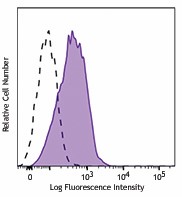
-

Mouse fibroblast NIH/3T3 cells were stained with CD34 (Clone HM34) APC (filled histogram) or Armenian hamster IgG APC isotype control (open histogram).
| Cat # | Size | Price | Quantity Check Availability | Save | ||
|---|---|---|---|---|---|---|
| 128611 | 25 µg | 91€ | ||||
| 128612 | 100 µg | 237€ | ||||
CD34 is a highly glycosylated hematopoietic progenitor antigen.Two isoforms of CD34 have been reported. CD34 is expressed on hematopoietic progenitors, as well as endothelial cells, brain and testis. CD34 is thought to function as an adhesion molecule for attachment of stem cells to extracellular matrix or stromal cells.
Product DetailsProduct Details
- Verified Reactivity
- Mouse
- Antibody Type
- Monoclonal
- Host Species
- Armenian Hamster
- Immunogen
- Mouse CD34 transfected BHK cells
- Formulation
- Phosphate-buffered solution, pH 7.2, containing 0.09% sodium azide.
- Preparation
- The antibody was purified by affinity chromatography, and conjugated with APC under optimal conditions.
- Concentration
- 0.2 mg/ml
- Storage & Handling
- The antibody solution should be stored undiluted between 2°C and 8°C, and protected from prolonged exposure to light. Do not freeze.
- Application
-
FC - Quality tested
- Recommended Usage
-
Each lot of this antibody is quality control tested by immunofluorescent staining with flow cytometric analysis. For flow cytometric staining, the suggested use of this reagent is ≤1.0 µg per million cells in 100 µl volume. It is recommended that the reagent be titrated for optimal performance for each application.
- Excitation Laser
-
Red Laser (633 nm)
- Application Notes
-
The HM34 antibody does not stain bone marrow cells like some other mouse CD34 antibodies, probably because the antibody recognizes a different epitope from other mAbs.
- Product Citations
-
- RRID
-
AB_10553895 (BioLegend Cat. No. 128611)
AB_10553896 (BioLegend Cat. No. 128612)
Antigen Details
- Structure
- Type I membrane protein, highly glycosylated, 75-120 kd, two isoforms reported.
- Distribution
-
Hematopoietic progenitors, brain, testis, endothelial cells
- Function
- Possible adhesion molecules thought to function in early hematopoiesis by mediating attachment of stem cells to bone marrow extracellular matrix or stromal cells. Present carbohydrate ligands to selectins.
- Ligand/Receptor
- L-selectin, and others.
- Cell Type
- Endothelial cells, Hematopoietic stem and progenitors
- Biology Area
- Cell Biology, Immunology, Neuroinflammation, Neuroscience
- Molecular Family
- Adhesion Molecules, CD Molecules
- Antigen References
-
1. Garlanda C, et al. 1997. Eur J Cell Biol 73:368
2. Brown J, et al. 1991. Int Immunol 3:175 - Gene ID
- 12490 View all products for this Gene ID
- UniProt
- View information about CD34 on UniProt.org
Related FAQs
Other Formats
View All CD34 Reagents Request Custom Conjugation| Description | Clone | Applications |
|---|---|---|
| Purified anti-mouse CD34 | HM34 | FC |
| Biotin anti-mouse CD34 | HM34 | FC |
| Alexa Fluor® 647 anti-mouse CD34 | HM34 | FC |
| PerCP/Cyanine5.5 anti-mouse CD34 | HM34 | FC |
| PE anti-mouse CD34 | HM34 | FC |
| APC anti-mouse CD34 | HM34 | FC |
| APC/Fire™ 750 anti-mouse CD34 | HM34 | FC |
| PE/Dazzle™ 594 anti-mouse CD34 | HM34 | FC |
| PE/Cyanine7 anti-mouse CD34 | HM34 | FC |
| TotalSeq™-A0857 anti-mouse CD34 | HM34 | PG |
| APC/Cyanine7 anti-mouse CD34 | HM34 | FC |
| TotalSeq™-C0857 anti-mouse CD34 | HM34 | PG |
| TotalSeq™-B0857 anti-mouse CD34 | HM34 | PG |
Customers Also Purchased
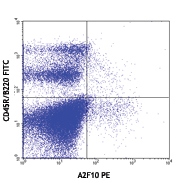


Compare Data Across All Formats
This data display is provided for general comparisons between formats.
Your actual data may vary due to variations in samples, target cells, instruments and their settings, staining conditions, and other factors.
If you need assistance with selecting the best format contact our expert technical support team.
-
Purified anti-mouse CD34
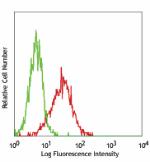
NIH/3T3 cell line stained with purified HM34, followed by bi... -
Biotin anti-mouse CD34
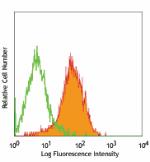
NIH/3T3 cell line stained with HM34 biotin, followed by Sav... -
Alexa Fluor® 647 anti-mouse CD34

NIH/3T3 cell line stained with HM34 Alexa Fluor® 647 -
PerCP/Cyanine5.5 anti-mouse CD34
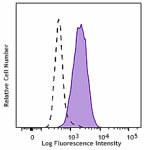
Mouse fibroblast NIH/3T3 cells were stained with CD34 (clone... -
PE anti-mouse CD34
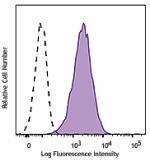
Mouse fibroblast NIH/3T3 cells were stained with CD34 (Clone... -
APC anti-mouse CD34

Mouse fibroblast NIH/3T3 cells were stained with CD34 (Clone... -
APC/Fire™ 750 anti-mouse CD34

Mouse fibroblast NIH/3T3 cells were stained with CD34 (Clone... -
PE/Dazzle™ 594 anti-mouse CD34
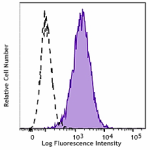
Mouse fibroblast NIH/3T3 cells were stained with CD34 (Clon... -
PE/Cyanine7 anti-mouse CD34
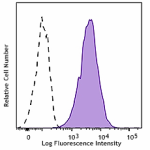
Mouse fibroblast NIH/3T3 cells were stained with CD34 (Clone... -
TotalSeq™-A0857 anti-mouse CD34
-
APC/Cyanine7 anti-mouse CD34
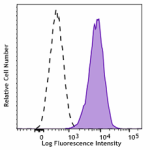
Mouse fibroblast NIH/3T3 cells were stained with CD34 (clone... -
TotalSeq™-C0857 anti-mouse CD34
-
TotalSeq™-B0857 anti-mouse CD34
 Login / Register
Login / Register 














Follow Us